#Java history
Explore tagged Tumblr posts
Text
Dokumen-dokumen ini menjelaskan interaksi antara VOC (Vereenigde Oostindische Compagnie) dan penguasa lokal di Jawa pada akhir abad ke-18. Dokumen ini mencakup upaya untuk mengelola hubungan politik, termasuk penyerahan Maas Said yang berjanji setia kepada Soesoehoenang dan VOC, serta pengangkatan Pangerang Adepatty Sitja-Diningrat sebagai Wedono. Langkah-langkah ekonomi juga diambil untuk mengatasi dampak perang dan panen yang buruk, seperti memberikan pendapatan dari sarang burung walet dan tembakau kepada pemimpin lokal, mencabut larangan ekspor beras, serta memfasilitasi perdagangan barang seperti kopi, gula, kapas, dan nila. Upaya ini mencerminkan strategi VOC untuk mempertahankan kendali, membangun kesetiaan, sekaligus menjaga stabilitas pemerintahan lokal dan perekonomian. The documents outline the Dutch East India Company's interactions with local rulers and territories in Java during the late 18th century. They detail efforts to manage political relationships, including the submission of Maas Said, who pledged allegiance to the Soesoehoenang and the Company, and arrangements for local rulers such as the appointment of Pangerang Adepatty Sitja-Diningrat as Wedono. Economic measures were taken to address the aftermath of war and poor harvests, including granting income from bird's nest cliffs and tobacco to local leaders, lifting export bans on rice, and facilitating trade in goods like coffee, sugar, cotton, and indigo. These efforts reflect the Company's strategies to maintain control and foster allegiance while balancing local governance and economic stability.
314
LI. Gubernur Jenderal Jacob Mossel dan Dewan Hindia kepada Para Pengurus Kompeni Dagang Hindia Timur Belanda (HH. XVII)
Batavia, 31 Desember 1767
Yang Mulia,
Kapal pendahulu, Blydorp, telah tiba.
Mengenai pantai timur Jawa: Seperti yang disarankan oleh Yang Mulia pada akhir Desember tahun lalu, kami awalnya memperkirakan perlu mengambil langkah militer kembali melawan Maas Said pada musim semi ini untuk memaksanya menyerah. Namun, setelah Gubernur Hartingh kembali dari Semarang, situasi berubah menjadi lebih baik.
Pemberontak yang sebelumnya bersembunyi di pegunungan selatan akhirnya mengajukan penyerahan diri melalui surat, disertai janji persahabatan. Ia juga menyatakan kesediaannya untuk mengirim saudaranya, Timor, dan seorang Pringalaya kepada Soesoehoenang.
315
Maas Said menyatakan kesetiaannya kepada Kompeni dan Soesoehoenang, serta niatnya untuk hidup dan mati bersama mereka. Namun, ia terlalu ketakutan untuk segera pergi ke Surakarta, karena pasukan masih berada di dekatnya. Selain itu, ipar Sultan, Raden Tommogong Prowirodiridja, juga hadir, seseorang yang membuat Maas Said merasa malu dan enggan untuk berurusan dengannya.
Oleh karena itu, ia memohon agar Soesoehoenang bersedia menemuinya di luar Surakarta, sehingga ia dapat menunjukkan rasa hormatnya. Ia juga meminta untuk diizinkan duduk di kursi, seperti yang diberikan kepada Pangeran Madura. Kedua permintaan ini diserahkan kepada kebijaksanaan Yang Mulia, sementara pasukan dari Cajoe Manu ditarik ke Solo.
316
Pagi hari, hadiah dikirim ke istana dan kepada Tuan Saif sebagai bentuk dorongan, yang berhasil menciptakan dampak positif. Namun, utusan ingin mengajukan permintaan yang melampaui perintah Kaisar, yang tidak sesuai dengan peraturan yang berlaku. Permintaan tersebut sangat berlebihan hingga melibatkan wilayah Sultan. Gubernur dengan bijaksana mengalihkan permintaan tersebut dan menjelaskan kepada Kaisar bahwa Jawa telah terbagi, dengan pesisir menjadi milik Kompeni, sementara kondisi wilayah pegunungan sudah diketahui.
Akhirnya, kesepakatan tercapai, di mana mereka puas dengan 4000 tjatjas (bidang tanah) yang terletak di Cadoesang, Laro Matesse, dan Pegunungan Selatan. Selain itu, atas permintaan rendah hati, Boesoehoenang diizinkan bersumpah setia kepada Sultan dan Kompeni di Aleoran, dengan janji untuk tinggal di Solo, hadir pada hari-hari resmi kekaisaran, dan mematuhi perintah para penguasa.
Ia diberi gelar kehormatan Pangerang Adepatty Mancoenagara. Administrator negara Sultan, Raden Adepatty Danoeredja, dan Mayor Donkel diberitahu tentang kejadian ini dan diundang ke lokasi yang sama. Semua ini dilakukan untuk memfasilitasi pertukaran tjatjas di distrik yang disebutkan, yang telah selesai dengan kepuasan kedua belah pihak.
317
Sejumlah f 6000 diizinkan untuk dicatat sebagai pengeluaran. Pangeran yang disebutkan menunjukkan sikap yang pantas dan menghormati serta mematuhi Soesoehoenang, yang istananya telah tumbuh dalam reputasi dan populasi sejak itu.
Para penguasa menekankan kemiskinan mereka, serta kondisi menyedihkan yang mereka alami akibat kehancuran perang. Hanya seperempat dari harta mereka yang tersisa. Mereka meminta dukungan dalam bentuk pendapatan dari sarang burung walet dan tembakau Cadoesche. Sesuai dengan saran kuat dari Gubernur, ini diberikan kepada mereka melalui surat khusus tertanggal 1 April tahun ini, dengan syarat mereka bersumpah setia kepada Kompeni untuk selamanya.
Adipati Madura, Pangerang Adepatty Sitja-Diningrat, atas permintaan baru, diangkat pada 25 Februari tahun ini sebagai Wedono (kepala wilayah) untuk wilayah timur dari Grissee hingga Lassum. Wilayah Surabaya, Sumenep, dan Pamacasan dikecualikan dari wewenangnya. Penunjukan ini bersifat pribadi dan tidak dapat diwariskan kepada keluarganya.
Selain itu, Tommogong Japara, kepala wilayah pertama Japara, diberhentikan karena usia tuanya. Ia digantikan oleh keponakannya, Wiero Mantri, yang kini menyandang nama Tommogong Praxa.
Di Cheribon, karena hasil panen buruk selama dua tahun terakhir dan kelangkaan yang terjadi, kantor Kompeni tidak perlu membeli beras atau padi, karena stok mencukupi. Setiap hari, beras dikirim secara pribadi dari Jawa, yang memungkinkan pencabutan larangan ekspor tanpa kekhawatiran, dan pengangkutan kembali diizinkan untuk semua pihak. Pengiriman mencakup 56 muatan beras, 1240 bundel padi, dan jumlah sedang seperti 976.937 pon kopi, 790.437 pon gula, 15.260 pon benang kapas, 5000 pon nila, dan 7875 pon lada.
314
LI. The Governor-General Jacob Mossel and the Council of the Indies to the Directors of the Dutch East India Company (HH. XVII)
Batavia, December 31, 1767
Your Excellency,
The forerunner (the ship) Blydorp, etc.
Regarding Java's eastern coast: Following Your Excellency's advice at the end of last December, it had been considered necessary to again take up arms against Maas Said this spring to bring him to submission. However, after the return of Governor Hartingh, who had been present in Samarang, the situation took a favorable turn.
The rebel, who had been hiding in the southern mountains, eventually submitted himself in writing, accompanied by assurances of friendship. He also expressed his willingness to send his brother Timor and a certain Pringalaya to the Soesoehoenang.
315
Maas Said declared his strong commitment to the Company and the Soesoehoenang, expressing his willingness to live and die with them. However, he was too overwhelmed with fear to travel quickly to Soeracarta, as the army was still nearby and had not yet departed. Additionally, the Sultan's brother-in-law, Radeen Tommogong Prowirodiridja, was present, with whom Maas Said felt ashamed and reluctant to engage.
He therefore pleaded for the Soesoehoenang to meet him outside of Soeracarta so he could show the necessary respect. He also requested to be allowed, like the Pangerang of Madura, to sit on a chair. Both requests were left to the discretion of His Highness, while the army of Cajoe Manu was withdrawn to Solo.
316
In the morning, gifts were sent to the court and Mr. Saif as encouragement, which had the desired effect. However, the representatives wished to submit a request that went beyond the Emperor's orders, which was not in line with the established protocols. This request was so excessive that it involved the Sultan's lands. The Governor tactfully redirected the request and explained to the Emperor that Java was divided, with the coastal areas being Company property, and that the situation in the uplands was well known.
Eventually, an agreement was reached, with satisfaction at receiving 4000 tjatjas (land parcels) located in Cadoesang, Laro Matesse, and the Southern Mountains. Additionally, at his humble request, the Boesoehoenang was allowed to swear loyalty to the Sultan and the Company on the Aleoran, with a promise to remain in Solo, appear on the customary Emperor’s days, and obey the orders of the rulers.
He was honored with the title of Pangerang Adepatty Mancoenagara. The Sultan's state administrator, Radeen Adepatty Danoeredja, and Major Donkel were informed of these events and summoned to the same location. All of this was done to facilitate the exchange of tjatjas in the aforementioned districts, which has already been successfully completed to the satisfaction of both parties.
317
An amount of f 6000 was permitted to be written off. The aforementioned Pangerang conducts himself appropriately and shows the necessary respect and obedience to the Soesoehoenang, whose court and status have since grown in both reputation and population.
The rulers emphasized their poverty, as well as the deplorable condition they were in due to the destruction caused by the war. Only a quarter of their possessions remained. They therefore requested support in the form of income from the bird’s nest cliffs and the Cadoesche tobacco. Following strong advice from the Governor, this was granted to them in a special letter dated April 1 of this year, on the condition of their eternal allegiance to the Company.
The Regent of Madura, Pangerang Adepatty Sitja-Diningrat, was, upon renewed request, appointed by decree on February 25 of this year as Wedono (chief regent) of the eastern territories and provinces from Grissee to Lassum. This excluded the regions of Sourabaya, Sumanap, and Pamacassan, which were outside his jurisdiction. This appointment was strictly personal and not transferable to his family.
Furthermore, the aged Tommogong Japara, the first regent of Japara, was granted resignation due to his advanced years. He was succeeded by his nephew, Wiero Mantri, who now bears the name Tommogong Praxa.
In Cheribon, due to poor harvests over the past two years and the resulting shortages, no rice or paddy had to be purchased by the Company office, as there was sufficient stock available. Daily shipments of rice were delivered privately from Java, which allowed the export ban to be lifted without concern and transportation to resume for everyone. The shipments consisted of 56 loads of rice, 1240 bundles of paddy, and moderate quantities of 976,937 pounds of coffee beans, 790,437 pounds of sugar, 15,260 pounds of cotton thread, 5000 pounds of indigo, and 7875 pounds of pepper.
314
LI. De Gouverneur-Generaal Jacob Mossel en Rade van Indie aan de Bewindhebbers der Generale Oost-Indische Compagnie (HH. XVII)
Batavia, 31 december 1767
WelEdele Hoogachtbare,
De voorlooper (het schip) Blydorp, enz.
Met betrekking tot Java's Oostkust: Ingevolge het door UEd. Hoogachtbare geadviseerde op het einde van december jl., had men overwogen dit voorjaar opnieuw genoodzaakt te zijn om tegen Maas Said de wapenen op te nemen om hem tot het uiterste te brengen. Echter, na de terugkomst van de toenmalig in Samarang aanwezige Gouverneur Hartingh, hebben de zaken een gunstige wending genomen.
De rebel, die zich in het zuidelijke gebergte schuilhield, heeft zich uiteindelijk bij een briefje van onderwerping en met verzekering van vriendschap bereid verklaard zijn broer Timor en een zekere Pringalaya af te zenden naar de Soesoehoenang.
315
Maas Said betuigde dat hij zich serieus verbonden voelde met de Compagnie en de Soesoehoenang, en voortaan bereid was met hen te leven en sterven. Toch was hij te zeer bevangen door angst om zich zo snel naar Soeracarta te begeven, aangezien het leger in zijn nabijheid nog niet vertrokken was en zich daar ook nog de zwager van de Sultan, Radeen Tommogong Prowirodiridja, bevond, voor wie hij zich schaamde en met wie hij niet graag zaken wilde doen.
Hij smeekte daarom dat de Soesoehoenang hem enigszins buiten Soeracarta zou willen ontmoeten, zodat hij de vereiste eerbied kon betuigen. Ook verzocht hij dat, net zoals de Pangerang van Madura, hij op een stoel mocht plaatsnemen. Beide verzoeken werden aan de keuze van Zyn Hoogheid overgelaten, terwijl het genoemde leger van Cajoe Manu naar Solo werd teruggetrokken.
316
’s Morgens werden, ter aanmoediging, geschenken naar het hof en aan de heer Saif gezonden, hetgeen effect sorteerde. De gecommitteerden wilden echter een verzoek indienen buiten het bevel van de Keizer om, wat niet in lijn was met de gegeven orders. Het verzoek was echter zo exorbitant dat het land van de Sultan erbij betrokken werd. De Gouverneur leidde het verzoek met tact af en legde aan de Keizer uit dat Java verdeeld was, waarbij de stranden eigendom van de Compagnie waren, en dat men bekend was met de situatie in de bovenlanden.
Uiteindelijk werd een akkoord bereikt, waarbij men tevreden was met 4000 tjatjas, gelegen in Cadoesang, Laro Matesse en het Zuydgebergte. Daarnaast, op zijn nederig verzoek, werd aan de Boesoehoenang toegestaan om trouw te zweren aan de Sultan en de Compagnie op de Aleoran, met de belofte om in Solo te blijven wonen, op de gewone Keizerlijke dagen te verschijnen en de bevelen van de vorst te gehoorzamen.
Hij werd geëerd met de titel van Pangerang Adepatty Mancoenagara. Over deze gebeurtenissen werden de Sulthans’ rijksbestuurder Radeen Adepatty Danoeredja en majoor Donkel geïnformeerd en naar dezelfde locatie ontboden. Dit alles diende ten behoeve van de uitwisseling van de tjatjas in de genoemde districten, wat reeds tot wederzijds genoegen was afgerond.
317
Een bedrag van f 6000 was gepermitteerd om af te boeken. Voornoemde Pangerang gedraagt zich naar behoren en betoont de verschuldigde eerbied en gehoorzaamheid aan de Soesochoenang, wiens hof en status sindsdien nog meer aanzien en volk heeft gewonnen.
De vorsten hebben nadrukkelijk hun armoede getoond, evenals de beklagenswaardige toestand waarin zij door de verwoestingen van de oorlog waren gebracht. Van hun bezittingen bleef slechts een vierde deel over. Zij verzochten daarom om ondersteuning door middel van inkomsten uit de vogelnestklippen en de Cadoesche tabak. Dit werd, op krachtig advies van de Gouverneur, in een aparte missive van 1 april jl. aan hen toegewezen, op voorwaarde van hun eeuwige trouw aan de Compagnie.
De Regent van Madura, Pangerang Adepatty Sitja-Diningrat, werd, op basis van een vernieuwd verzoek, bij besluit van 25 februari van dit jaar benoemd tot Wedono (opperregent) over de oostelijk gelegen landen en regentschappen, vanaf Grissee tot Lassum. Dit gold echter niet voor de regentschappen Sourabaya, Sumanap en Pamacassan, die buiten zijn bevoegdheid vielen. Deze benoeming was strikt persoonlijk en niet overdraagbaar op zijn familie.
Ook is de oude Tommogong Japara, de eerste regent van Japara, vanwege zijn hoge leeftijd ontslag verleend. Hij werd opgevolgd door zijn neef, Wiero Mantri, die voortaan de naam Tommogong Praxa draagt.
In Cheribon, vanwege de slechte oogsten van de afgelopen twee jaar en de daaruit voortvloeiende schaarste, heeft men bij het comptoir geen rijst of padi hoeven in te kopen, aangezien er voldoende voorraad voorhanden was. Dagelijks werd vanuit Java door particulieren voldoende rijst aangeleverd, waardoor het uitvoerverbod met gerustheid kon worden opgeheven en vervoer weer aan iedereen werd toegestaan. De aanvoer bestond uit 56 lasten rijst, 1240 bossen padi, en gematigde hoeveelheden van onder andere 976,937 pond koffiebonen, 790,437 pond suiker, 15,260 katoenen garen, 5000 pond indigo, en 7875 pond peper.
#history#colonial history#VOC#Dutch East India Company#18th century#historical documents#archival research#Southeast Asian history#colonial Indonesia#Java history#Maas Said#Soesoehoenang#Javanese culture#colonial politics#economic history#Javanese kingdoms#East Indies#Dutch colonial rule#tjatjas#VOC archives#history enthusiasts#historical analysis#learn history#Indonesian history#tumblr historians#academic blogging#research notes#archival studies
0 notes
Text
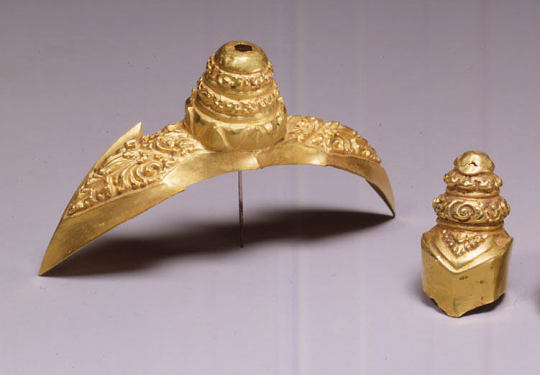
Gold hair ornaments with Kala motifs, Indonesia (Java), 8th-10th century
from The Metropolitan Museum of Art
121 notes
·
View notes
Text

WWI coffee break - wounded American GIs pause for coffee while recuperating in a Red Cross outpost NARA gif, NARA ID 8953.
Hooray, hooray, it’s National Coffee Day! ☕
Our records clearly show that coffee is a health food! See product label below.
COFFEE IS:
"A drink for the sick and the well"
"A drink for the young and the old"
"palatable, wholesome and nourishing"
"A drink for morning, noon and night."
"Healthful and delicious, wholesome and appetizing."

Coffee is a health food! Grains of Health Label, Records of the Patent and Trademark Office, Product label 1906, NARA ID 5714039.

Coffee samples from various areas are tested for taste and aroma by Sr. Aldo Cabella. Oficina Central de Cafe, Guatemala City, 4/3/1947. NARA ID 30805841.
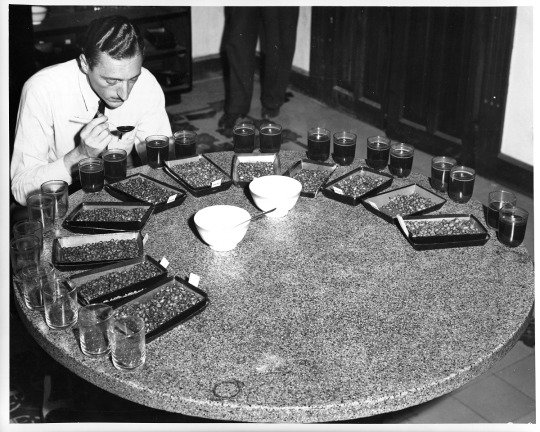
Coffee in SPACE!

Commander Richard Richards drinks coffee on the Space Shuttle Discovery's during STS-64, 1994. NARA ID 22837732
Glorious, glorious beans!

Coffee drying in concrete patio is turned at intervals to expose all beans to the sun. Finca Chocola. Guatemala. Mitchell. 13-17-45

Coffee at the North Pole?

Original caption: This image depicts Coast Guardsmen on a trawler in the Arctic enjoying a cup of coffee.


#National Coffee Day#Coffee Day#Coffee#Coffee History#Java#Cafe#Mocha#History#National Archives#National Archives Catalog
256 notes
·
View notes
Text



computer science is not my forte...
#minute doodles#fnaf moon#moon fnaf#moondrop fnaf#fnaf moondrop#minute sona#my sona#it's just java but gravity the way it's taught...#i'm a linguistics and history gal this isn't my thing...#delete later
50 notes
·
View notes
Text

Say hi to Sir Lady Java!
She was born in New Orleans in 1943. She transitioned at a young age with help from her mother and became a singer and dancer at local nightclubs. She was the first trans woman of color to perform in the L.A. nightclub scene. She was a fierce Igbtq+ rights activist while she was active.
#sir lady java#Lgbtinsbc#lgbt#lgbtq#queer#lgbt history#lgbtq history#queer history#trans#transgender#trans history#lgbt Louisiana#queer Louisiana
49 notes
·
View notes
Text
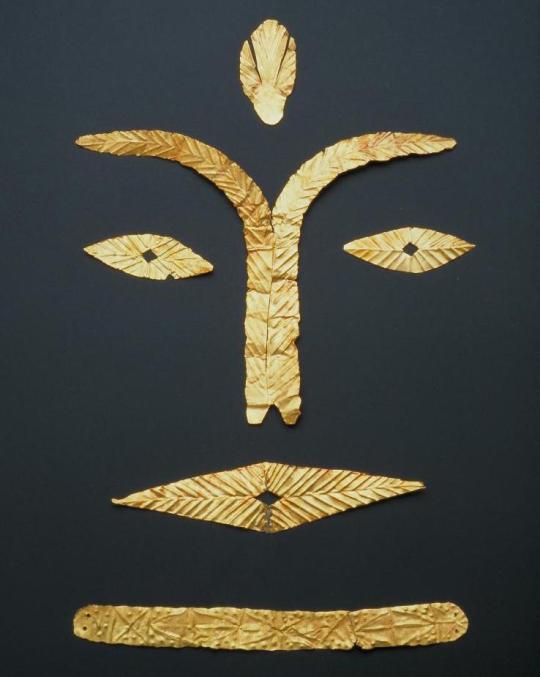
Funerary Face Cover, Java, Indonesia,
Preclassic Period (ca. 500 B.C.E. / 500 C.E.)
Gold,
Eye-Nose cover: 4.54 × 4.8 cm, 1.087 g, 0.01 cm (1 13/16 × 1 7/8 in., 1.087 g),
#art#history#design#style#archeology#sculpture#antiquity#mask#funerary#java#indonesia#preclassic period#gold#jewelry#jewellery
37 notes
·
View notes
Text

The Javanese in Sri Lanka represent a small yet historically and culturally significant ethnic minority group whose roots trace back to the island of Java in modern-day Indonesia. While today their numbers are relatively modest, their legacy reveals a complex tapestry of colonial-era migration, religious and cultural transformation, and assimilation within the broader Moor and Malay communities of Sri Lanka. The Javanese presence in Sri Lanka is deeply interwoven with the dynamics of European colonialism in Southeast Asia and the Indian Ocean world, particularly during the Dutch and British periods. Despite the limited size of the community, their influence has been disproportionately rich in terms of religious practice, cultural retention, and social history.

The migration of Javanese individuals to Sri Lanka began primarily during the period of Dutch colonial rule in the Indian Ocean, particularly in the 17th and 18th centuries. The Dutch East India Company (Vereenigde Oostindische Compagnie, or VOC), which had consolidated control over both Ceylon (modern-day Sri Lanka) and the Dutch East Indies (modern-day Indonesia), often transferred populations across its colonial holdings for administrative, military, and punitive purposes.
A significant portion of the Javanese population in Sri Lanka arrived not as voluntary migrants but as political exiles, slaves, or convicts. Many were members of the Javanese aristocracy or resistance leaders who opposed Dutch rule. These individuals, deemed a threat to colonial control, were exiled from Java to Dutch colonial outposts, including Sri Lanka. One of the most notable cases is that of Prince Susuhunan Pakubuwono II of Surakarta’s entourage and other noble figures who were exiled for their roles in uprisings or suspected subversion. Alongside these elites were soldiers and laborers, including artisans and religious figures, who were brought to Ceylon to serve in various capacities under Dutch command.
This forced migration created a diaspora community that was geographically dislocated but culturally vibrant, maintaining ties to Javanese customs, language, and especially Islam. The migration of Javanese to Sri Lanka also included people from other parts of the Indonesian archipelago, such as Madura and Sumatra, further enriching the ethnic mosaic that would come to be associated with the Sri Lankan Malays, among whom the Javanese would be culturally subsumed over time.

Over the centuries, the Javanese in Sri Lanka were gradually absorbed into the broader "Malay" community—a category that includes peoples from the Malay Archipelago brought to Sri Lanka during the Dutch and British colonial periods. This umbrella term has obscured the distinct ethnic identities of Javanese, Bugis, and other Southeast Asian groups, but it has also provided a collective identity that allowed these migrants and their descendants to maintain a degree of cultural cohesion.
The Malays in Sri Lanka, including those of Javanese descent, primarily settled in the coastal and urban areas of the Western and Southern provinces, including Colombo, Kandy, Hambantota, and Galle. These settlements were often established near colonial administrative centers or military installations where Malays served as soldiers in colonial militias, police, and other service positions.
Javanese linguistic influence in Sri Lanka has largely receded, with Malay and Sinhala being more commonly spoken among descendants. However, vestiges of Javanese vocabulary, particularly in ritual contexts and family heritage, persist in some Malay households. The use of Javanese honorifics, titles, and naming conventions was once common among elite Javanese families in Sri Lanka, especially those descended from nobility.

Religion has played a central role in preserving Javanese identity in Sri Lanka. The majority of Javanese migrants were Muslim, and their Islamic practices aligned with the broader Malay community, which facilitated communal integration. However, the form of Islam practiced by the Javanese often retained elements of Javanese religious culture, including Sufi mysticism and syncretic rituals rooted in pre-Islamic traditions.
Some of the earliest mosques established by the Malays and Javanese in Sri Lanka became centers of religious learning and cultural preservation. These institutions often taught Arabic, Malay, and basic Javanese texts, especially during the 18th and 19th centuries. The Mawlid celebrations, communal prayer sessions, and recitations often featured uniquely Javanese Islamic chants and devotional literature. In particular, Javanese-style Qur'anic recitation and religious poetry—such as syair—were prominent in religious festivities.
Traditional Javanese dress, culinary practices, and ritual customs survived in modified forms. For example, dishes such as "nasi goreng," "sambal," and "satay" made their way into the broader Sri Lankan Malay culinary tradition, although often with localized ingredients. Celebrations such as weddings, coming-of-age ceremonies, and religious festivals still bear traces of Javanese customs, such as batik garments, gamelan-inspired musical rhythms, and traditional Javanese court etiquette.

During the colonial period, Javanese-descended individuals, like other Malays, held positions in the colonial military and police forces. They were considered reliable by the Dutch and later the British due to their perceived loyalty and martial skill. These roles afforded some degree of upward mobility, though they remained socially marginalized compared to the majority Sinhalese and Tamil populations.
In post-independence Sri Lanka, the Javanese community—largely merged into the Malays—has maintained a modest but active presence in political, social, and religious spheres. Malay organizations such as the Sri Lanka Malay Confederation and local mosques have played crucial roles in advocating for minority rights and preserving cultural heritage. While the Javanese identity is often subsumed under the Malay label, some families continue to preserve genealogies and oral histories that trace their roots specifically to Java.
Javanese Sri Lankans have occasionally served as bridges between Sri Lanka and Indonesia, particularly in diplomatic and cultural exchanges. The Indonesian Embassy in Colombo has supported cultural preservation efforts and highlighted the shared heritage between the two countries, sometimes hosting events featuring Javanese dance, music, and cuisine to reconnect diasporic communities with their ancestral culture.

As with many small diaspora communities, assimilation, intermarriage, and modern urbanization have contributed to the erosion of a distinct Javanese identity in Sri Lanka. The younger generation is often more integrated into Sinhala or Tamil linguistic and cultural spheres, and many no longer speak Malay, let alone Javanese. Yet, there is a growing recognition among scholars and cultural activists of the need to document and preserve this unique historical legacy.
Academic interest in the Javanese of Sri Lanka has increased in recent decades, particularly within the fields of Southeast Asian studies, Islamic history, and migration studies. Researchers have focused on archival materials from the VOC, Dutch legal records, family trees, oral traditions, and religious texts to reconstruct the history of Javanese migration and settlement. These studies reveal a community that, while numerically small, made a meaningful contribution to Sri Lanka’s multicultural heritage.
Efforts to preserve the legacy of Javanese Sri Lankans have also included community-based oral history projects, digital archiving of old photographs and documents, and collaborative projects between Sri Lankan Malays and Indonesian cultural organizations. The story of the Javanese in Sri Lanka is increasingly seen not just as a local phenomenon, but as part of a broader narrative of Indian Ocean migrations and the transnational histories of Islam and colonialism.

The Javanese in Sri Lanka represent a microcosm of the broader diasporic experiences shaped by colonialism, forced migration, and cultural resilience. Though many have been absorbed into the larger Malay community, the distinct historical and cultural contributions of Javanese Sri Lankans remain an important part of the island’s diverse social fabric. Their legacy offers insight into the complexities of identity, heritage, and survival in the context of displacement and assimilation. As modern efforts to preserve this heritage grow, the story of the Javanese in Sri Lanka continues to enrich understandings of both Sri Lankan and Southeast Asian history.
#javanese#sri lanka#sri lankan history#javanese diaspora#indian ocean history#colonial history#ethnic studies#cultural heritage#malay sri lanka#islamic history#javanese culture#indonesian diaspora#southeast asia#sri lankan muslims#batik art#javanese traditions#forgotten histories#minority voices#sri lankan malays#diaspora culture#javanese aesthetics#historical migration#ethnography#sri lankan culture#indonesian heritage#java to ceylon#postcolonial studies#muslim communities#oral histories#island histories
2 notes
·
View notes
Text
Ear Ornaments—Java, Indonesia, late 700s to late 900s

These gorgeous ear ornaments are made of gold and inlaid with stones.
5 notes
·
View notes
Text
My thoughts on Jimmy Ong’s exhibition on Raffles (Warning: Kind of NSFW)
(Warning: It’s not recommended to view this if you are a Raffles fan, because this is kind of NSFW (and/or NSFL to a Raffles fan) because it contains nudity, as well as a sculpture of Raffles’ body without a head and limbs, being used as a charcoal grill.)
So, I recently learnt about this artist and his works at an exhibition in 2016. He did a series of black-and-white artworks and a couple sculptures of Raffles, with the theme mostly revolving around his actions during the invasion of Java in 1812, and nudity for some reason. The works can be viewed here:
There are some articles about this particular exhibition that explained the artist’s works:
The Mothership article explains it the best. Essentially, this exhibition is about the artist wanting to portray another side to Raffles that is contrary to the hero that Singapore regards him as. One of the artworks depict a Javanese goddess sitting on a Rafflesia and scolding Raffles in the nude, while another had him being tattooed on the thigh. I don’t really get why the artist had to involve nudity, but my thoughts on this exhibition in general is that it’s pretty interesting that a Singaporean was the one who created these works, rather than say, an Indonesian.
#raffles#stamford raffles#singapore#singapore history#historical#thefoundersofsingapore#Jimmy Ong#Exhibition#Java
2 notes
·
View notes
Text


Asian Civilizations Museum, Singapore
4 notes
·
View notes
Text
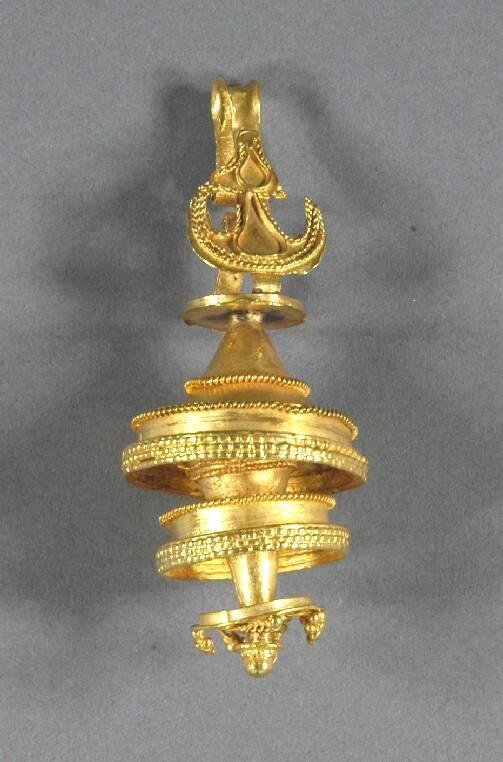
Gold ear ornament, Java, Indonesia, 7th-10th century AD
from The Museum of Fine Arts, Houston
127 notes
·
View notes
Text

Celeng (piggy bank). Java, Indonesia. 13th-15th Century CE.
Museum Nasional Indonesia.
#museum nasional indonesia#indonesia#indonesian history#java#javanese#animals in art#sculpture#early modern period#early modern history#pig#asian history
4 notes
·
View notes
Text
Yawa the goddess and yawa the expression might have arisen separately and have no connection with each other whatsoever. Nagmalitong Yawa figures heavily in the Sulod epic Hinilawod. The Sulod, or Bukidnon, was a loose group of highland dwellers in the island of Panay, consisting of the Panaynon, Agburin-on, etc. Yawa, the expletive, is commonly associated with eastern Visayans who speak Bisaya. There are no current studies that includes a goddess “Yawa” in the mythologies of Bisaya-speaking Visayans, so it’s highly possible that the Panay Yawa and the Bisaya yawa emerged in a convergent manner: right around the same time, but share no actual relationship.
Another line of investigation suggests that the denigration of Yawa might have occurred earlier, even before the Spaniards arrived in the archipelago. Sanjaya, progenitor of the formidable Sailendra dynasty of ancient Java, launched several offensives against many of his maritime neighbours to cement his kingdom’s place in the region. He had successfully defeated Srivijayan forces in the 8th century and even managed to annex parts of Cambodia. Academic transcriptions of Indonesian historical texts spell the name of their polity as “Yava”. Their expansive influence and naval conquests in the waters of southeast Asia may have given them a reputation of ruthlessness, so much so that in the traditional accounts, Airlangga, one of Java’s most prominent kings, first had to “struggle with ‘demons’ in central Java, a struggle that lasted from 1025 to 1037” to consolidate his rule in the central region. Over time and distance, pronunciations must have changed. What was once Yava or Jawa (in Indonesia, people from Java are called Orang Jawa), may have morphed into yawa in Bisaya tongues, and owing to their past military encounters with them, the Bisaya may have adopted it as a word to remember their enemies, their “demons”.
Excerpt from “History as a Progressive Fantasy Land” (2022) by Pippo Carmona
11 notes
·
View notes
Text

2 notes
·
View notes
Text
December 29th? Who could forget USS Constitution vs. HMS Java day!
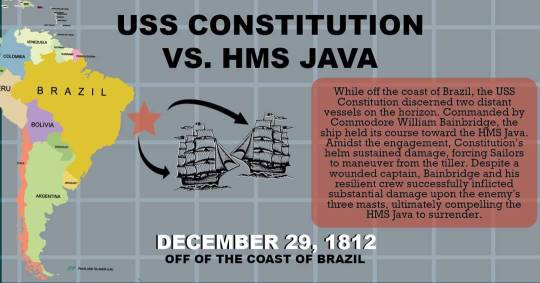

A contemporary drawing of the naval battle by Thomas Birch c. 1813 (Library of Congress).

USS Constitution vs HMS Java, by Anton Otto Fischer c. 1960 (Naval History and Heritage Command)
#war of 1812#age of sail#naval history#uss constitution#hms java#on this day#royal navy#us navy#military history#thomas birch#anton otto fischer#naval art#the sea#1810s
6 notes
·
View notes
Text
I was a Java noob
At one time, every user was a newbie. Facebook recently reminded me of something I wrote 11 years ago today, when I was learning Java:
I'm still trying to wrap my mind around the notion that Java (apparently) implements write-once semantics for references and primitive types but lacks read-only semantics for methods or objects. I'm also wishing Java collections provided a copy constructor for iterators. Despite these flaws, its advantages over C++ are stark.
Looking back, here are my reactions:
In Java, the natural way to implement read-only semantics for methods and objects is to define a read-only interface. This is what the JOML library does, for instance. For each mutable class (Matrix4f, Quaternionf, Vector3d) it defines an interface (Matrix4fc, Quaternionfc, Vector3dc) with read-only semantics. I wish I'd known that trick in 2012.
Some of Java's advantages are historical. Gosling in 1995 foresaw the importance of threads and URLs, so he built them into the language. Stoustrup in 1982 did not foresee their importance. (Believe it or not, URLs weren't invented until 1994!)
Some of Java's advantages are because it didn't try as hard to maintain compatibility with C. For instance, Stoustrup was doubtless aware of the portability headaches in C, such as "int" having different limits on different architectures, but it seemed more important to be able to re-use existing C code in C++ than to fix fundamental flaws in the language.
Not sure why I wanted a copy constructor for iterators. Nowadays I rarely use iterators directly, thanks to the "enhanced for loop" added in Java SE 5. That feature was 8 years old when I learned Java. Not sure why I wasn't using it.
I love Java even more than I did in 2012. Nowadays I dread working in C/C++
#programming languages#java#computing history#c++ language#c++#facebook#software development#newbie#coding
4 notes
·
View notes